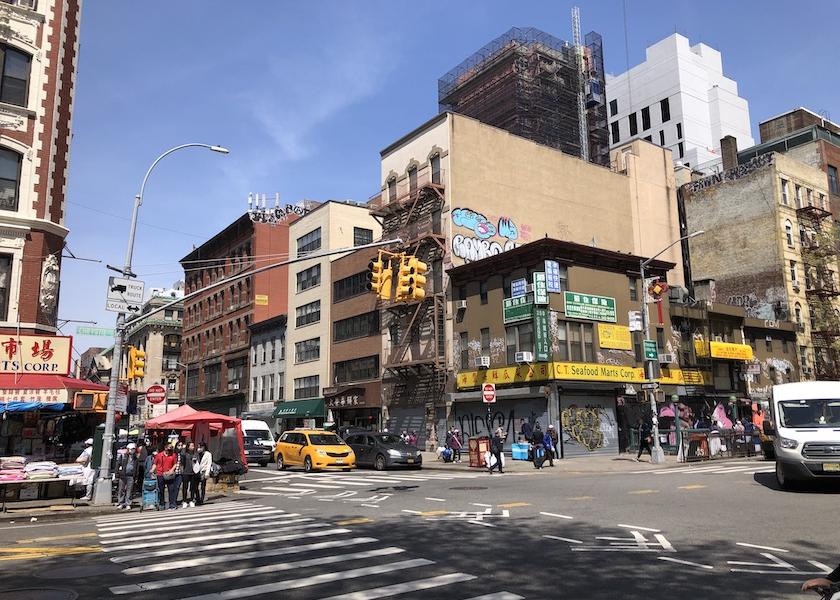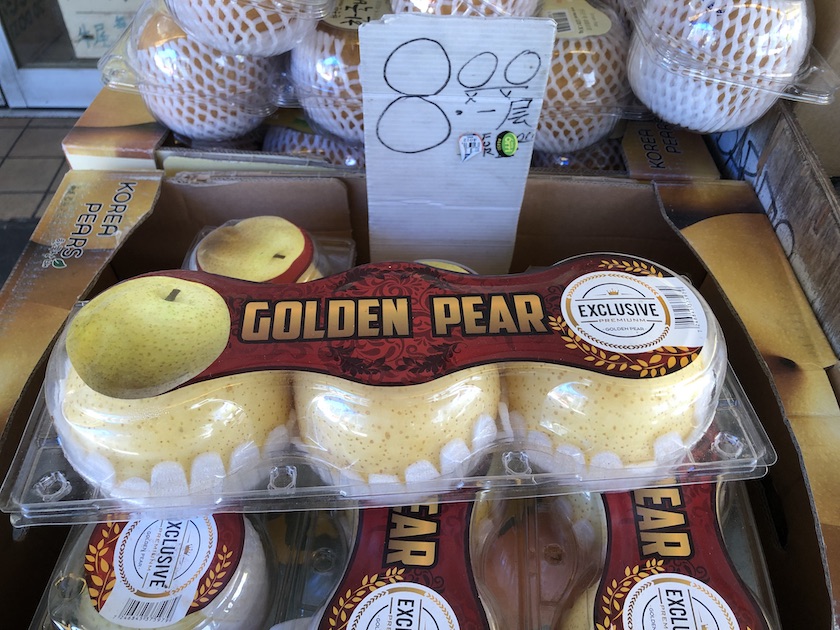Why this pear was so surprising

On a recent spring morning, I found myself leaving an appointment in New York City’s Chinatown. As I spilled onto the sidewalk, I faced all sorts of unfamiliar fresh produce displayed on tables on almost every block. Weaving through the foot traffic to reach the Grand Street subway station, I realized I couldn’t not stop and at least look at the produce filling those plastic and cardboard boxes.
With most point-of-sale signage written in Mandarin (I think), it was a little intimidating but also exciting and intriguing to someone who can read only English, a smidge of Spanish and, err, high school Latin. Masked grocery clerks stood behind the tables, their gloved hands ready to fill my hands if I merely paused.
This was my chance to try something I might not find in my own suburban supermarkets. Yes, I’ve been noticing more “exotic” produce at big chain retailers, often relegated to separate sections, and often in neighborhoods where there’s a market for it.
Learn about the most mainstream commercial pears here.
I use quotes for “exotic,” because I avoid the term these days when I can. It’s purely subjective. What’s exotic is what’s unfamiliar to me. To someone else, it’s an everyday item they’ve grown up eating.
As a fresh produce journalist, I want to unexoticize produce. I want to make more kinds of fruits and vegetables feel safe and appealing for more people to try. I want to share what I learn about the cultures of the world through the food grown there.
How do I do that?
Well, first off, I should try it myself. I admit, this time, I didn’t go too crazy. I chose a sand pear. Also called Asian pear, Chinese pear, Korean pear, Taiwan pear, apple pear, yali pear, nashi pear, golden pear or zodiac pear, I was going to taste one of many varieties and cultivars produced from a Pyrus pyrifolia, a tree native to western China.
Each cream-colored fruit was encased in white-diamond protective wrapping, making it seem prized. I was fascinated that this pear was shaped like an apple.
I stuffed the pear into my backpack and continued my journey home. The pear sat on my kitchen counter for a good two or three days because I wasn’t sure when it was ripe or what to do with it. Instead of researching for those answers, I noticed a blemish forming and decided I better eat it before it was too late.

First, I sliced out the small, undesirable part that needs no translation. Then, I just cut it randomly, kind of like I would an apple or familiar pear. I stuffed a chunk in my mouth and was surprised. It tasted delicate, sweet, floral and juicy, but with a crisp texture that reminded me of an apple. This sand pear almost had a crunch, but it tasted ripe.
After I ate it all, I then did my research. Hey, better late than never.
I learned Asian pears keep their firm texture after they’re picked and don’t soften in storage. The fruits are fully ripened on the tree. Once harvested, they can be eaten immediately. That texture makes even more sense.
Now, if I see any kind of apple-shaped pear in my own neighborhood stores, I won’t hesitate. It’s familiar, and it’s delicious.
— This article was published in the May/June issue of PMG magazine. To read the latest digital edition, the July/August issue, visit this page.







